|
This is the first of what I hope will be a series of posts highlighting bits of equipment that I love. I have paid for all of these items, they're not ones that I have been given. If I've bought them at a show I may have received a slight trade discount, but it's never been one I've asked for, and in all cases I've been prepared to pay the full price. If you're not a guild member it can sometimes to be hard to get a sense on what it's really like to use a piece of equipment. I'll be scrupulously honest, if I like a piece of equipment I'll say so and explain why. If other options are available, and I've tried them I'll explain why I don't like them. I am a bit of a Lazy Kate zealot. It's always on the equipment list for the spinning workshops I teach, and I emphasise that the "built-in" Lazy Kate with most spinning wheels, is not a Kate, it is simply bobbin storage. A good Kate needs to be separate from your wheel so you can position it to the side and ideally slightly behind you. Techniques like chain plying are made so much more difficult if you're trying to pull the single up past your moving knees and then guide them back to the orifice. In it's most basic form it can be as simple as a shoe box and some knitting needles, add in some plastic bags below the bobbins to act as resistance, and you actually have a very functional Kate. If I'm just doing a plain 2-ply I am content working with a non-tensioned Kate, but if I have a choice (and cough... I seem to have ended up with multiple choices), I will reach for one that is tensioned every time. In my possession I currently have... - A handmade upright Kate in the style of this Ashford one. This one gets used pretty regularly. - An arched Schacht Kate. I really dislike this one, and never use it, I only still have it as it came with my Matchless spinning wheel. - A flat base model like this one (though not this exact Kate, but it has upright spikes, and the same tension mechanism). Again, it came with a wheel, I don't use it. My favourite, and the one I use most is this one by Louet. It has all the features I look for in a Lazy Kate, it's simple to set up, has the ability to add slight resistance to the bobbin rotation, and will take all of my many different sizes of bobbins, and the many I've come across in workshops. It definitely takes, Schacht, Ashford, Majacraft, Louet, Woolmakers, and Hansen. This versatility is one of the reasons I love it, a kate that uses 2 upright posts either side of the bobbin support always runs in to trouble with differing length bobbins. It's a Kate I often take with me to workshops and usually end up lending out. During my course at Summer School numerous people borrowed it, and all were amazed at how well this really simple design works. I think a few were planning on adding it to their Christmas/Birthday list. It's not cheap...and of course the exchange rate of the Pound against the Euro hasn't helped. I suspect if you knew someone who was handy at wood working, and was capable of adding an embedded threaded tension knob it wouldn't be hard to make your own version. The right kit really can make all the difference to how easy it is to do a task, and particularly for something like chain plying, a lazy kate that offers the Goldilocks sweet spot of resistance to the bobbin rotation is absolutely key. I've tried other kates that use a piece of string with a spring in the groove of the bobbin (in the same way as you brake the bobbin using Scotch tension), and I find that it's either got too much resistance so I'm jerking the bobbin to pull off the singles, or there's not enough resistance to prevent back spin. To add resistance for this model you just alter the angle of the whole Kate by turning the black knob, adjusting the angle, and then tightening it again to fix it in place. Minimal resistance happens when the Kate is nearly horizontal, with the resistance increasing as you bring the spikes closer to upright. I think this shape of kate has advantages over an arched kate because the singles running off a bobbin are never rubbing past or over another bobbin. It's set up so you can use it with 4 spikes for smaller size bobbins, and then turn it over and relocating the spikes in to the 3 holes for larger size bobbins. However, in my experience I tend to leave it set up with the 4 hole configuration, as it will still hold 2 large bobbins. So far I've not found a make of bobbin it won't hold, it even works with bobbins that breakdown like my Akwerwork ones, that don't have a flat surface on one end. The only model I can't remember testing it with, and confirming the fit is Lendrum. The other bonus is of course it's size... if a 4-ply yarn is on your spinning list you can just use a single Kate. When I'm not using it the whole thing gets folded flat and then slid under the sofa.
If you're in the UK there are a few stockists of Louet products, the following list the Kate on their websites, other dealers may be able to order it if you enquire directly. -Weftblown (not in stock currently, but they will order it in for you) - The Threshing Barn (Janet doesn't yet operate a webbed shop, so you will have to see her at a fibre festival, or ply phone tag to order it over the phone) - Hedgehog Equipment (Again, Sarah doesn't run a web shop, but you can order over the phone). The full list of Louet dealers is on the Louet website. Firstly, my apologies for the delay in getting this post up. I've had a cold for the past 2 weeks, and no one wants to listen to me explaining how to spin a fibre accompanied by constant sniffing! AS ever, this post contains spoilers. If you want to try any of the fibres from last month, or would like more of any of the fibres included, they're now all available to buy in the shop. The first fibre to start off with from this round of the club is Llama. Llamas are a member of the camelid family, like Alpacas, but larger in size. They produce a coat that is very similar to alpaca. This Llama is graded at 20-21 microns, which is at the finer end of the scale of the fibre produced commercially. It's a long stapled fibre, with very little crimp, as a result it won't spin in a yarn with much bounce and elasticity. If you spin from the end of the combed top you'll get a smooth, lustrous yarn. Alternatively spin from the fold to get a fluffier yarn. Next we've got Mulberry Silk. This is the most lustrous of all the silk types, which to me means that I want spin it in a way that maximises the shine. I like spinning it straight from the end of the combed top, in the video I give you a few hints on how to do this successfully, particularly if you usually end up with a jumbled mess off fibres. The final fibre in this month of the club is Ramie. This plant fibre comes from the nettle family; Boehmeria Nivea and Boehmeria Tenacissima. The outer pulp of the stem is removed, leaving behind the fibrous inner, which is then combed to remove all the shorter pieces of fibre, and any remaining pieces of outer stem. The fibre is processed China, before being dyed in Italy to Okeo-Tex 100 standards using renewable energy sources. It will spin in to a strong, smooth yarn, with a moderate amount of shine. The last month has felt very different to the previous years. For the first time in 6 years we didn't head towards Yorkshire to trade at Yarndale. I've already had a few disappointed comments from people who were sad not to see me there, but it's been such a good decision for me to do fewer in-person shows this year. It's meant I've been able to teach more (which I love doing), experiment more, and take more time off. On a work front, the first batch of 12 Days of Christmas parcels are very nearly ready to be sent out. I'm just doing the dyeing today, will be collecting the surprise extra tonight, and should have the first set of parcels packed and ready to be posted on Monday. After that I will put the next (and final) batch of parcels up for sale. The spectre of Brexit continues to linger over my shoulder. For the past year not a day has gone by when I've not thought about how to ensure my business will survive. One of my Italian suppliers has just contacted me about some really exciting new products, and I'd love to start stocking them. But it's just such bad timing. I could probably have the first batch delivered before we crash out, but then the any re-stock would face an immediate price rise as I'd have to pay customs fees, and admin fees to import those goods. If you're a customer in the EU I will try to make sure that you get your orders quickly, particularly the club orders, over the next month. Going forward, should we leave it's likely that your higher value parcels will be subject to some sort of charges as they enter your country. However, this will be outweighed by the fact that you will no longer be charged VAT when you make your purchase. Overall you shouldn't end up paying any more to receive your order as any admin fee charged will probably be balanced out by your reduced postage costs. On a more cheery note I have been doing more experimenting with dyeing outside my professional sphere. More cotton fabric, destined for pyjama bottoms, but this time using Procion dyes, and a technique called ice dyeing. This is a method that really caught me eye when I looked round the classrooms at Summer School , and was taught by Fiona Moir in her class Let's Dye It!. The dress featured below was hung outside to dry, and I know that many of us were coveting it during the coffee break, my photo completely fails to do it justice. I have also finished off my sample blanket from Summer School. For the class I taught I wanted to students to appreciate how the dye effect looked as fabric, and not just as a skein of yarn, so I encouraged them all to pick a simple pattern they could work on in the evenings. I gave them a short list of suggestions, and chose to do a Ten Stitch Blanket for my own class sampler. The centre uses all my sample skeins from the week-long class, and I then carried on using up all my oddments until it was large enough. It's now a very lovely reminder of a wonderful week. The photo below is the work completed by the students during Summer School... as you can see there are a few more Ten Stitch Blankets in progress! On the chicken front all the babies are no longer really looking like babies... Though it turns out that my cockerel breeding success continues. Vita, is definitely not a girl. However the name has now stuck, and given we have a Lillee, he's not the only cockerel in the flock with a non-traditional name. Over the years we've hatched 13 baby chicks, a grand total of 3 have been girls! Some one once asked me what I do with all my cockerels, and the answer is that I keep them all. They're more pets than livestock, and are kept because they make us happy, rather than for any consideration of producing food. the eggs we get are a lovely bonus. Generally the chickens live to old age and die peacefully in the garden. Occasionally one goes missing, usually one of the girls who has laid a clutch of eggs in a hidden spot, and then is never seen again. I've been very lucky to have boy cockerels who usually all get along. I usually have a group of 3 or 4 girls wandering round with 3 or 4 cockerels. The boys have a pecking order, just like the girls, but it's rare for it to ever go beyond a quick scuffle. In the spring I occasionally have to separate the cockerel who's at the bottom of the pecking order until hormone levels subside a little, but after a couple of days they soon go back to being a pretty harmonious group. Last weekend I was in London, for a meeting of the committee who runs The Journal for the Association of Guilds of Weavers, Spinners & Dyers. I've just taken over The Journal Twitter account, and will be using to to share all sorts of lovely textile things. Please come and follow if you feel you need more textiles in your life. I've really enjoying looking at a feed filled with beautiful objects, and news from people who make them. You can find it as @journalwsd Trains from my part of Wales make it impossible to arrive in London in time for a Saturday morning meeting, so I travelled down the day before, and spent a lovely afternoon going round the British Museum playing hunt the textiles. I found a few... Though I did get distracted by this stunning Grayson Perry Vase, particularly the vase on the vase "Craftsman. Hero in the Digital Age" I also found a bit of Welsh Gold. This cape was found in a grave in Mould, and dates from 1900-1600BC And finally some cloth! This is some of the oldest wool cloth found in Britain. It dates to the Roman occupation, late 4th century AD, and was woven in a 2-over-2 twill pattern. I started off the post talking about shows, which brings me round to my final show of 2019, I will be back at Bakewell Wool Gathering next weekend, we're in the side room as usual.
|
Archives
January 2024
Categories
All
|
Hilltop CloudHilltop Cloud- Spin Different
Beautiful fibre you'll love to work with. Established 2011 VAT Reg- 209 4066 19 Dugoed Bach, Mallwyd, Machynlleth,
Powys, SY20 9HR |

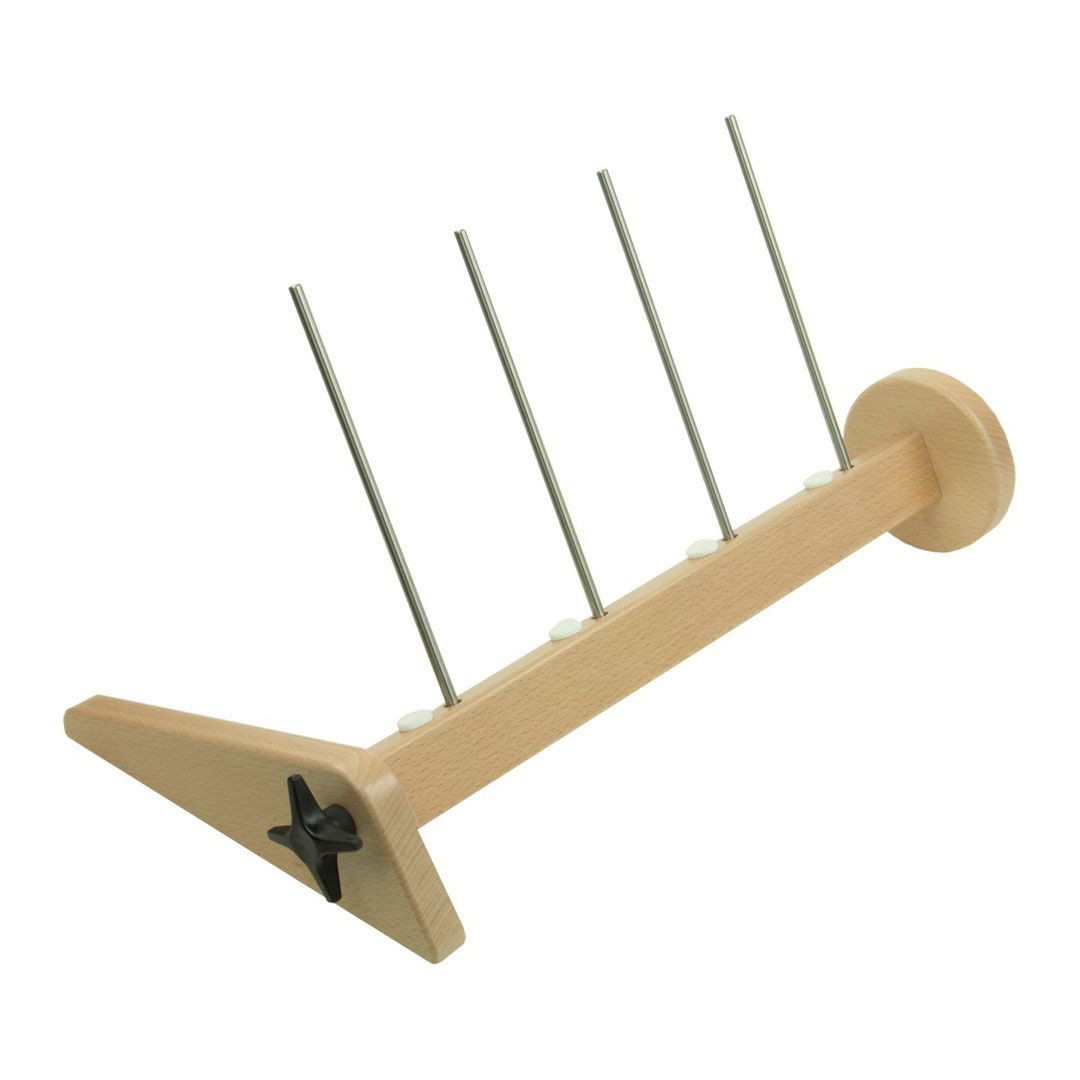
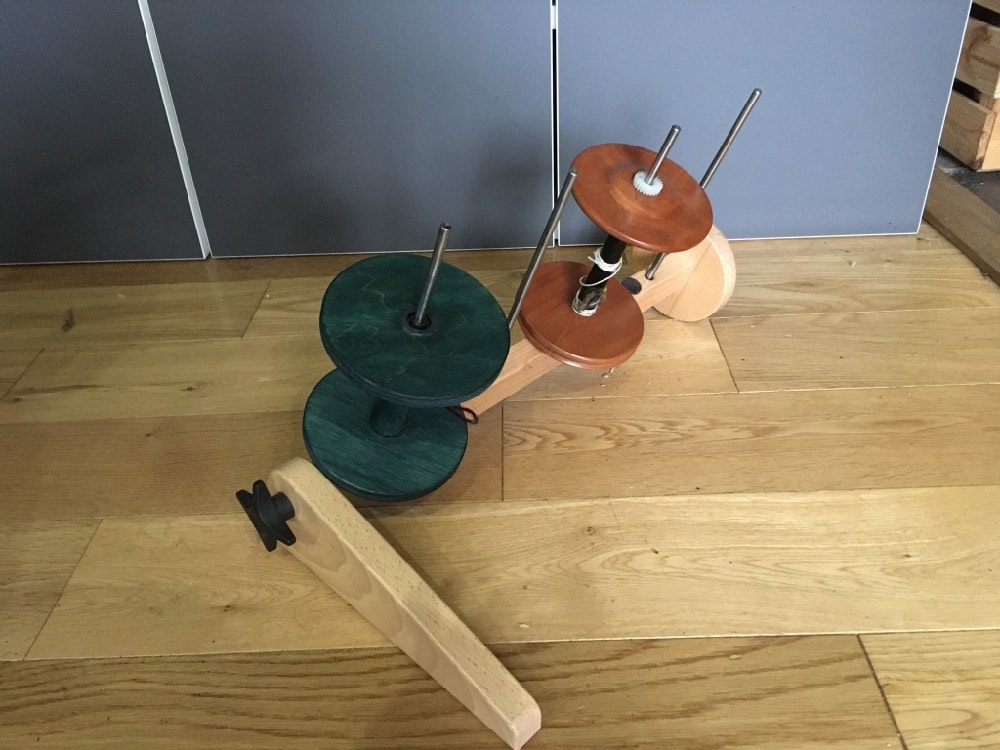
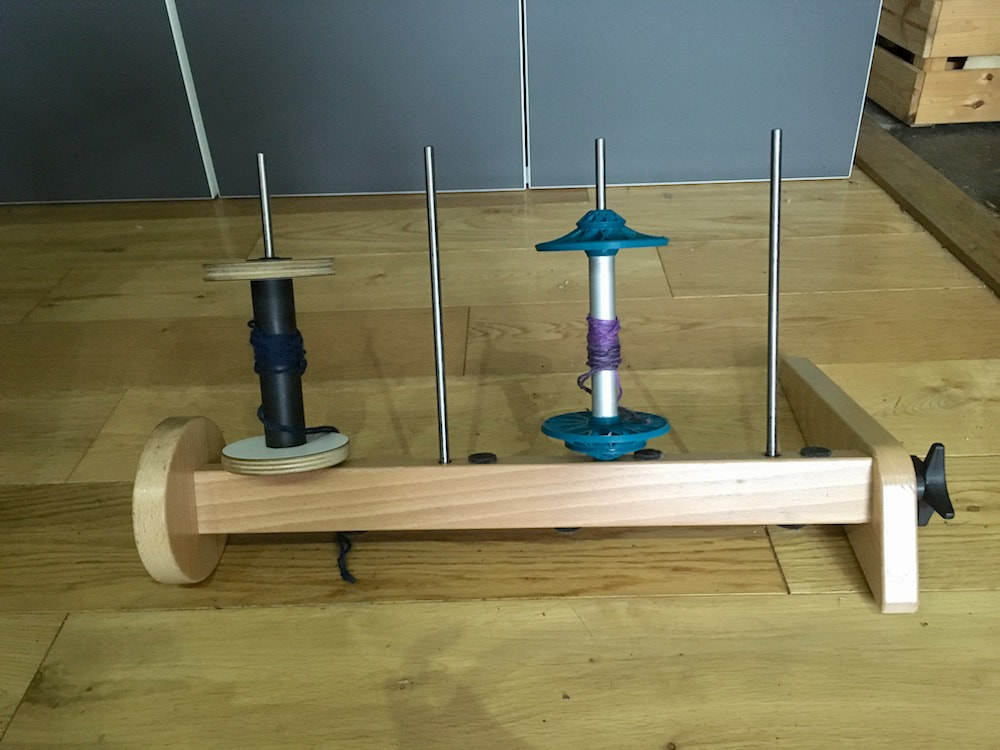
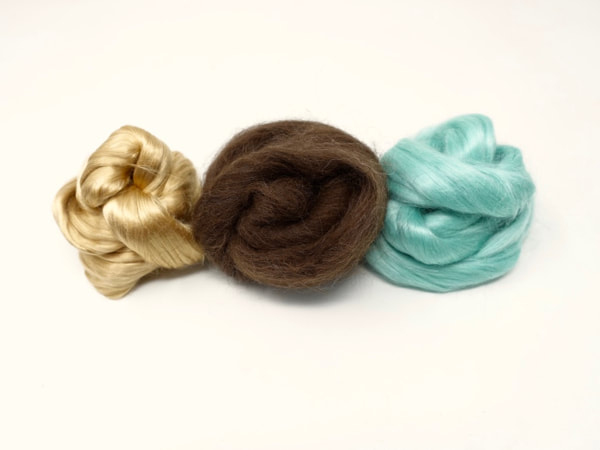
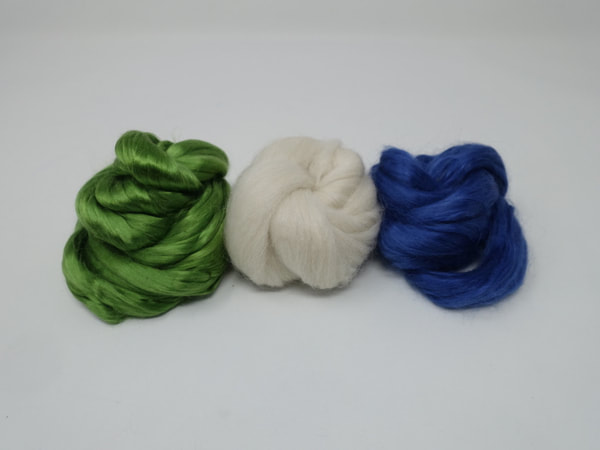


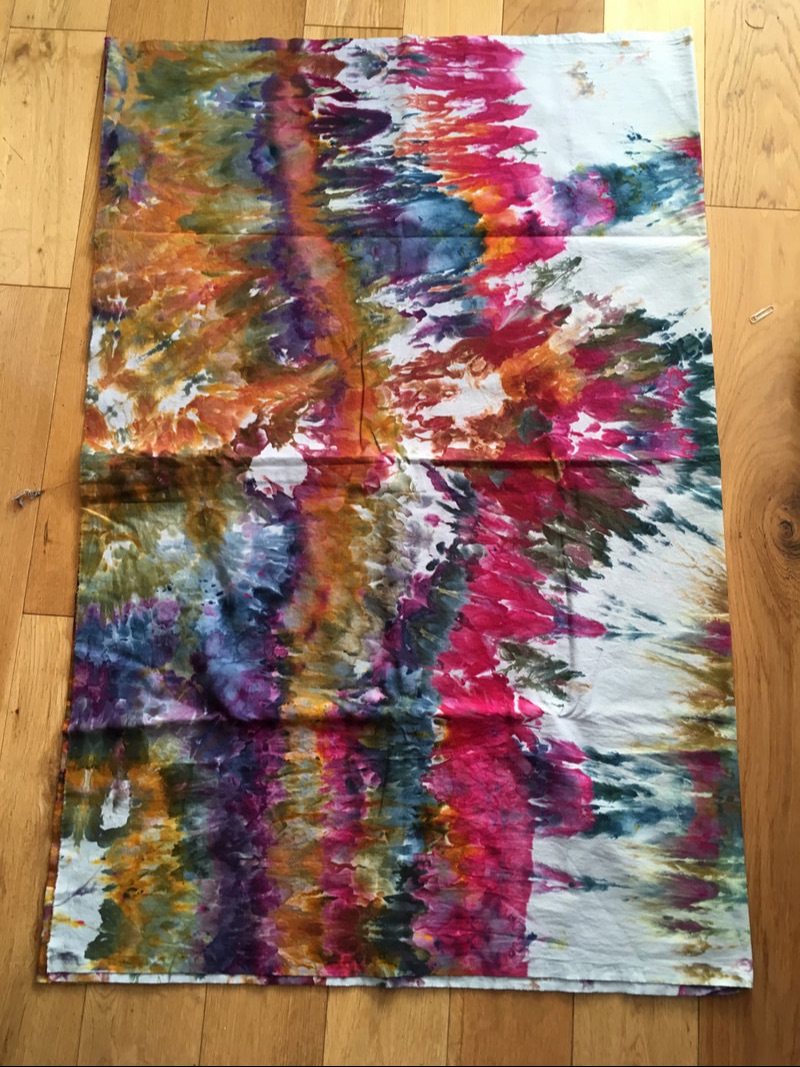
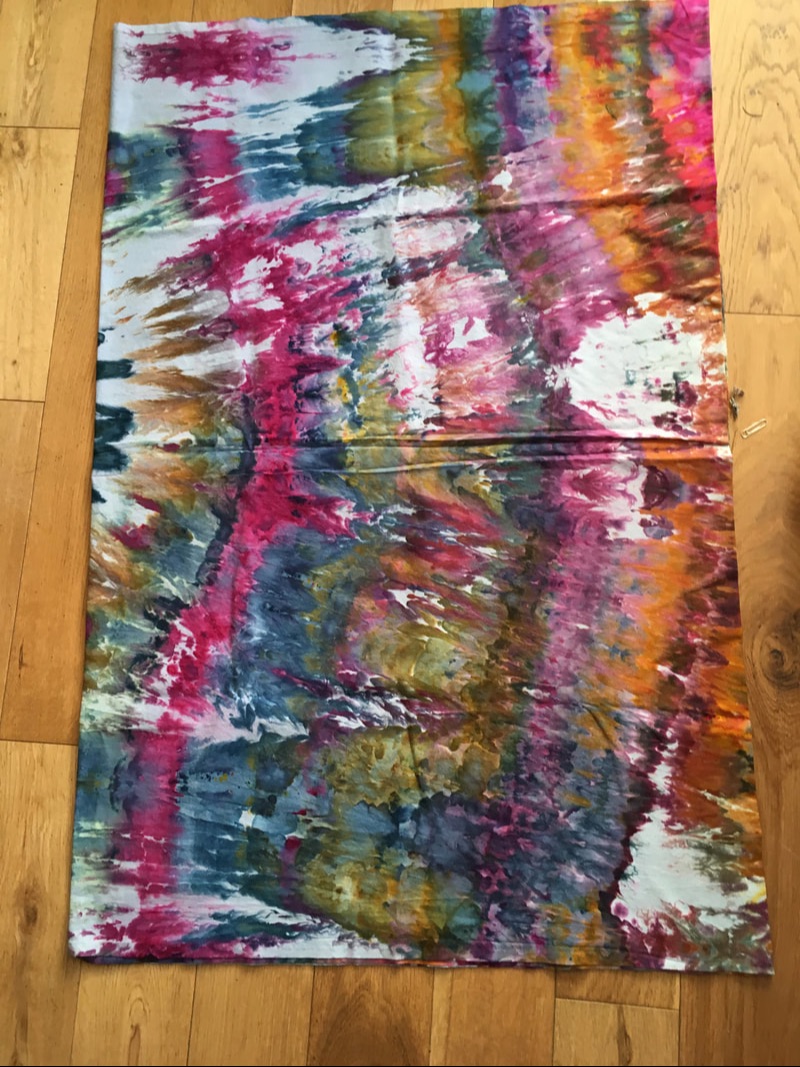
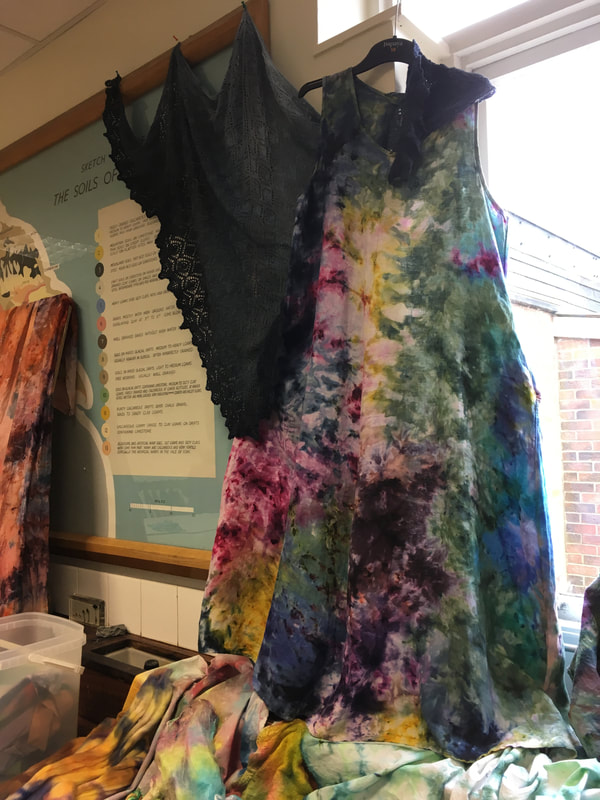
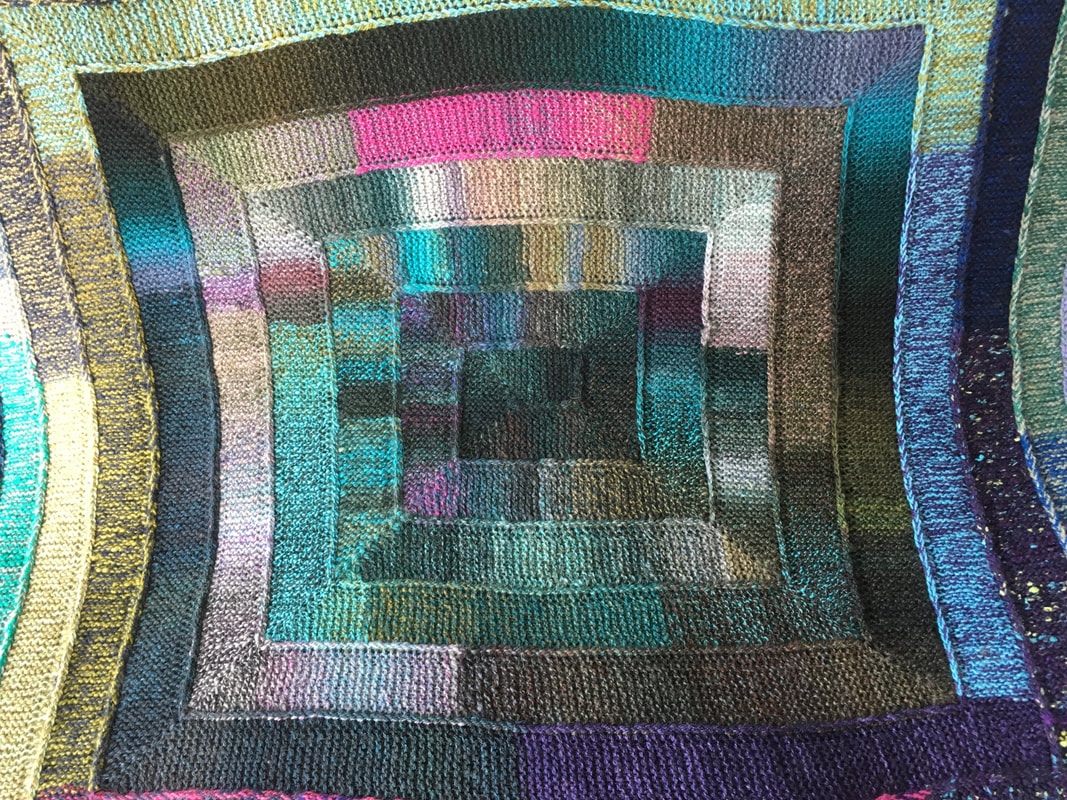
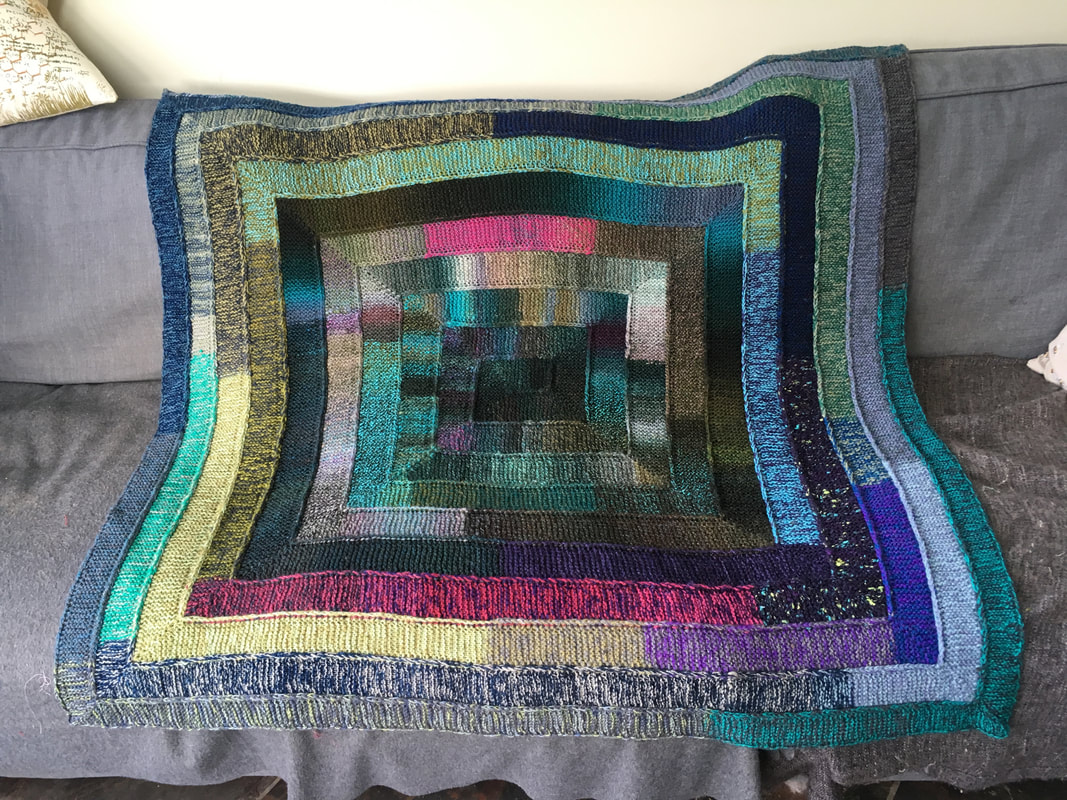
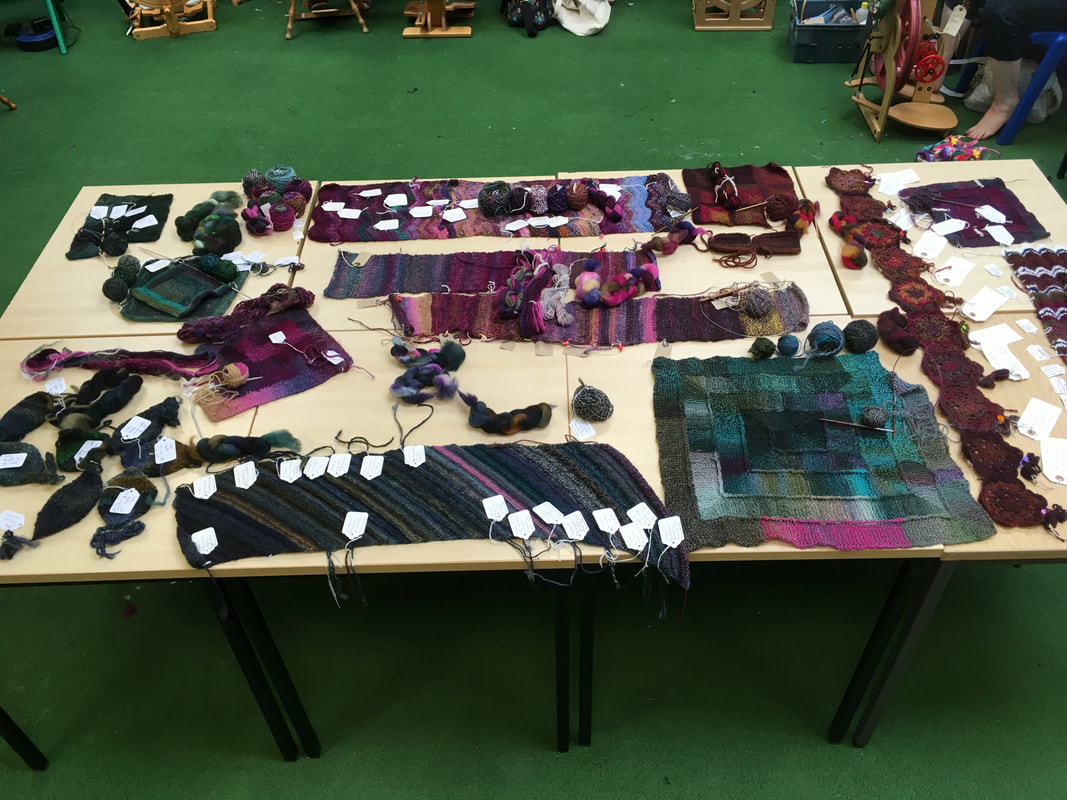
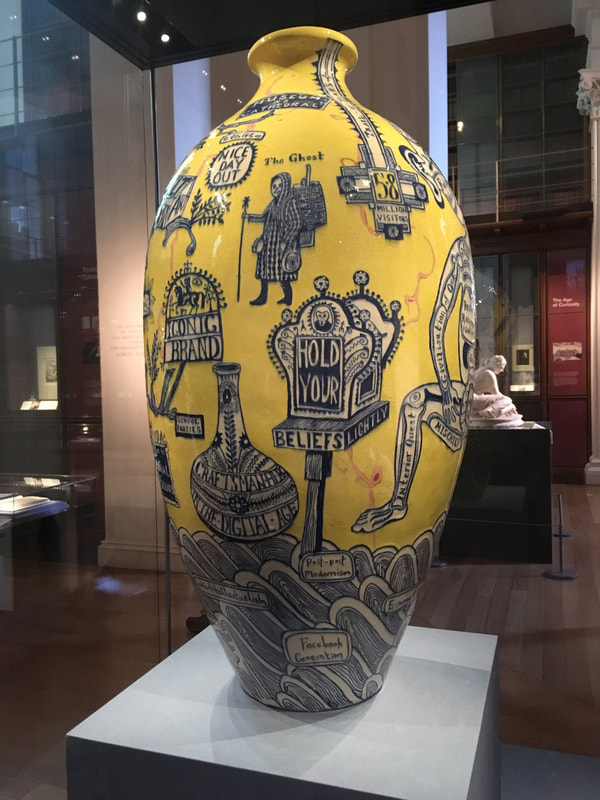
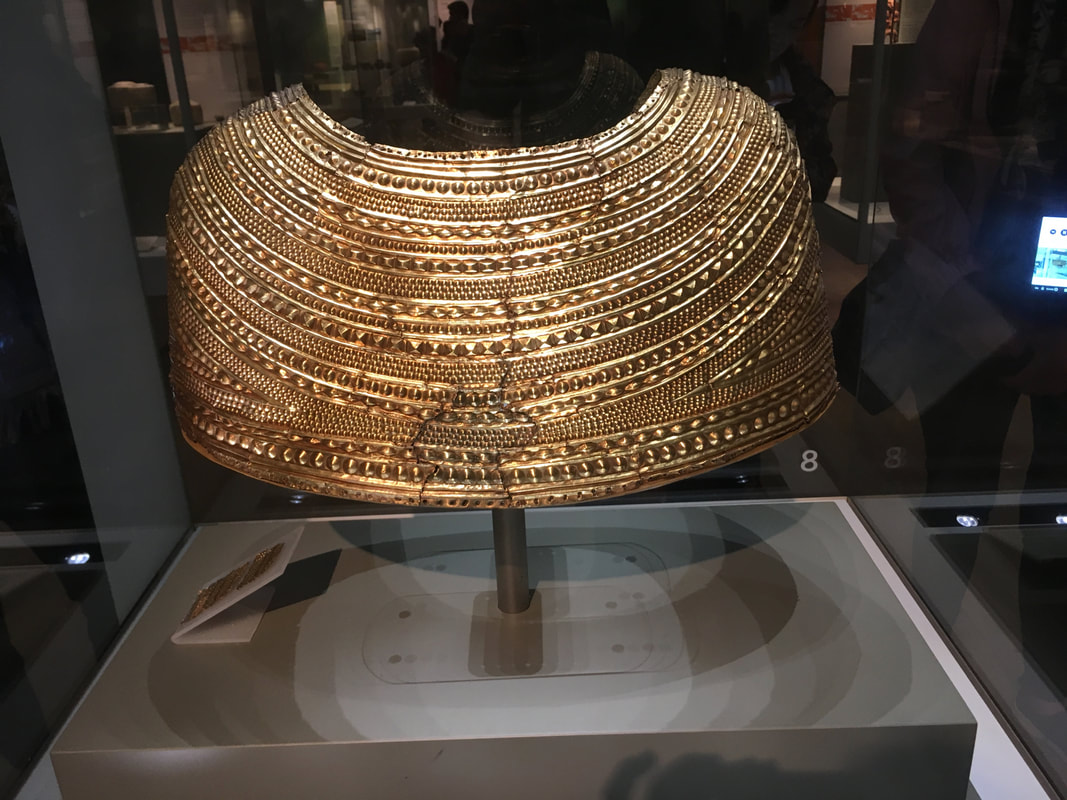
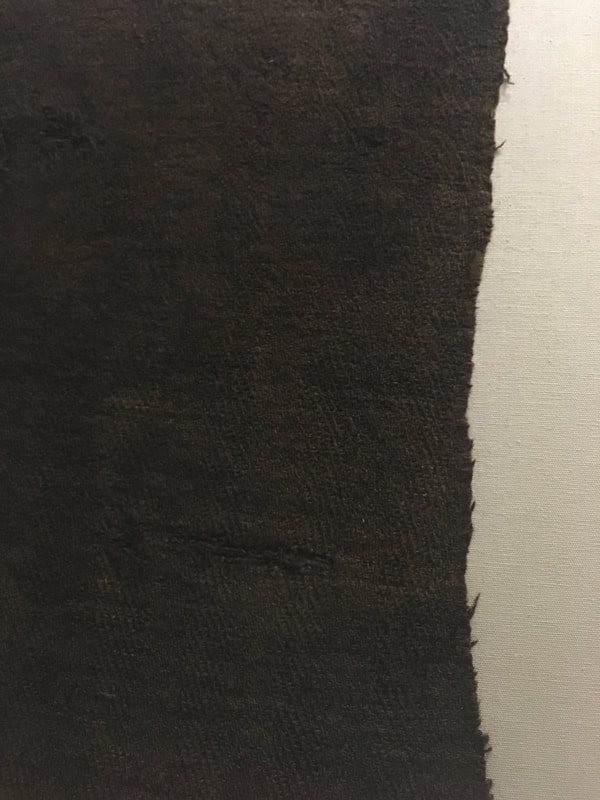
 RSS Feed
RSS Feed


